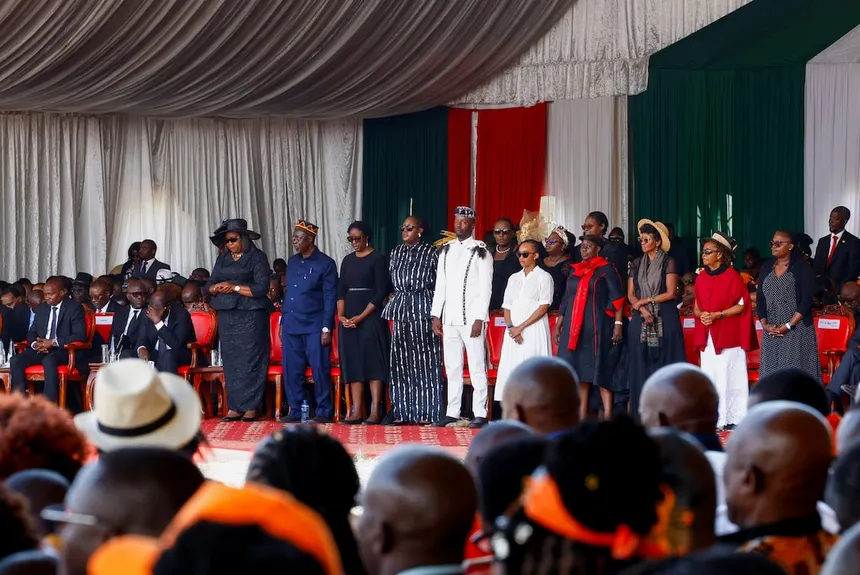
Thousands of Kenyans gathered across multiple venues this past week to bid farewell to one of the country’s most enduring political figures, Raila Odinga. His death at the age of 80 while receiving medical treatment in India triggered an outpouring of national grief — but the scale of the crowds and the intensity of the emotions also revealed fault lines in crowd management and public mourning.
The main funeral service took place in Bondo, western Kenya — Odinga’s home region — where an Anglican mass was held at the local university followed by a private interment near his father’s resting place. The casket, draped in the Kenyan flag, stood under a marquee as military honours were rendered and dignitaries from across Africa paid their respects. It was a moment of closure, describing in the words of his son, “Now finally Baba is home.”
Chaos and Tragedy Amid the Mourning
While the burial itself proceeded without major incident, the lead‐up was marred by chaos and tragedy. During public viewings of Odinga’s body in Nairobi and Kisumu, massive crowds surged at stadiums and other venues, making crowd control extremely difficult. According to humanitarian agencies and media reports, at least five people were killed and hundreds injured during stampedes and security interventions.
At one high‐profile public viewing in Nairobi, police opened fire to control surging mourners who tried to breach gates, resulting in fatalities and dozens in hospital. One report noted that at least two people died and nearly 200 were injured during the state funeral’s stadium service. These tragic incidents underscored the emotional magnitude of the moment — but also raised urgent questions about how large scale public mourning can be safely managed.

A Legacy of Political Struggle and Reform
Understanding the reaction to Odinga’s passing means understanding his trajectory in Kenyan politics. Odinga’s career spanned decades of opposition activism, electoral campaigns and reform efforts. He served as Prime Minister from 2008 to 2013, following the post‐election violence of 2007-08, and was a key architect of Kenya’s 2010 constitution. Despite losing multiple bids for the presidency, he remained a powerful voice in Kenyan public life and was widely referred to as “Baba” (father) by his supporters.
In 2025, Odinga concluded a political pact with President William Ruto, marking a new phase of alignment with the ruling government after years of opposition. Observers say his death creates a leadership vacuum within his party, the Orange Democratic Movement (ODM), at a time when Kenya is gearing up for its 2027 elections.

What the Farewell Signifies for Kenya
The scenes of mourning across the country reflect not only the personal popularity of Odinga, but the deep emotional resonance his story held for many Kenyans. For supporters in his strongholds, Odinga represented the long fight for democracy, accountability and inclusion — particularly for Kenya’s Luo community and other historically marginalised groups.
But the tragic crowd incidents also serve as a cautionary reminder: when national figures evoke such mobilising power, the logistics of large gatherings must be handled with precision and care. The bodies of the deceased and injured can cast a shadow over what should otherwise be a unifying national moment.
In death, Odinga’s passing stands as a unifying moment for many Kenyans — a time to reflect on the country’s democratic journey, its unfinished reforms, and the generational leadership transition ahead. President Ruto described Odinga as “a unifier” who helped steady the country, even as internal divisions within ODM and broader political currents now shift in a post‐Odinga era.

Conclusion
The farewell to Raila Odinga was at once poignant and sobering — a celebration of a remarkable political life, and a stark reminder of the responsibilities that accompany mass public emotions. As Kenya moves forward, the challenge will be to translate the sentiment of these days into sustainable reforms and inclusive leadership for the future.

Leave a Comment